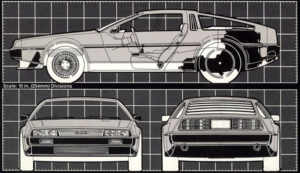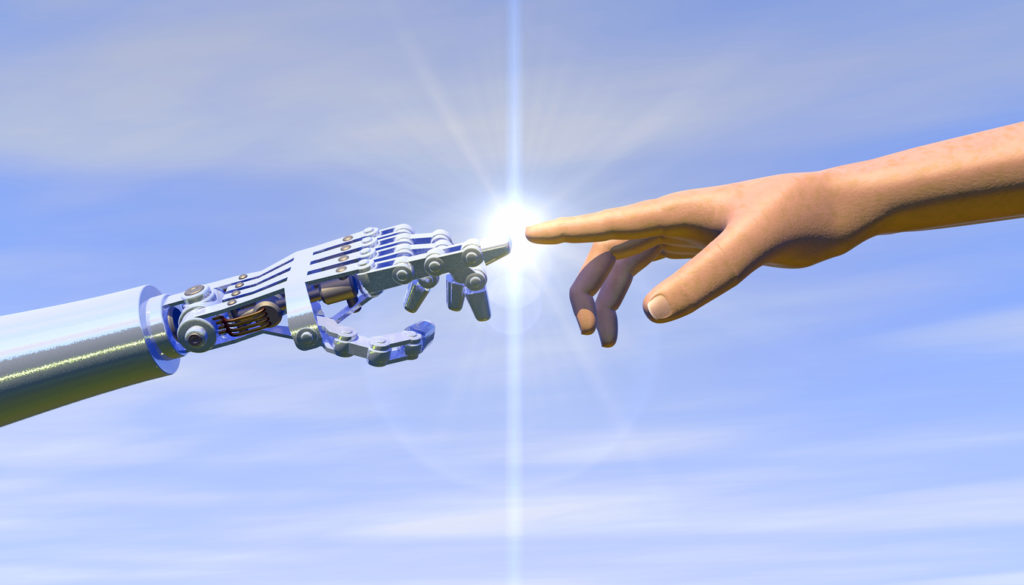 In this blog, Cambium LLP Associate and Director of Information Architecture at the AMRC, Richard Lanyon-Hogg, shares why scaling up and delivering success from the 4th Industrial Revolution through smarter innovation in UK manufacturing must revisit the hard-won lessons of past IT upheavals.
In this blog, Cambium LLP Associate and Director of Information Architecture at the AMRC, Richard Lanyon-Hogg, shares why scaling up and delivering success from the 4th Industrial Revolution through smarter innovation in UK manufacturing must revisit the hard-won lessons of past IT upheavals.
There is palpable excitement as to what the 4th Industrial Revolution (4IR) will unleash on UK manufacturing; the benefits are enormous [1], a boost in productivity, improved cost posture and profitability, an uplift in work life balance and new innovative business models.
4IR, enabled by the IoeT, is the coming together of two worlds of engineering; some see this as ‘oil and rags meets bits and bytes’. How we laughed when Bill Gates and General Motors entered a spat about Windows 95 versus the motor industry [2]; but therein lies a sense of how both worlds view each other, then and unfortunately now.
What underpins the 4IR is a set of technologies and processes now coined by the IT Industry as the Internet of Things’ (IoT). I include within the Io ’every Thing’ (IoeT) a whole host of other IT capabilities, Cloud, Analytics and Augmented Intelligence – as I personally do not feel we are there artificially, i.e. having true consciousness embedded in silicon. Anyone entering the workforce after 2005 may be forgiven for thinking that the world of the IoeT is all new and shiny. But; for those of us who started out in IT back in the early 1980’s, what we witnessed back in 1997 bears an awful lot of resemblance to the issues, challenges, hopes and fears of the early days of the commercialisation of the Internet. I’m sorry to burst any bubbles; but we’re back to the future, minus the DeLorean motorcar.

As with the early days of the commercialisation of the Internet, there’s a huge amount of excitement, visions of glorious sunny uplands, new business opportunities; and marketing and communication teams going into overdrive. The hype for any technology can be measured by the amount of conferences and Government initiatives springing up all over the world, encouraging you to build up (yet again) your air miles tally. The IoeT, a backbone to 4IR is no exception.
Back then we witnessed an explosion of point solutions. As a result, IT departments struggled to respond which led to many none in-house IT team implementations. IT departments had little come back to these backdoor solutions as being more often than not a cost centre, revenue generating teams always trumped in boardroom battles. A further decentralization of IT only exasperated the movement; centralized IT was being ring fenced: out-sourcing and the out-tasking of IT accelerated.
Point solutions rarely had centralized IT integration requirements, and being stand-alone, they tended to perform as expected. But; as the proliferation of point solutions accelerated, so businesses needed to respond to maintain any market advantage; ‘scale up’ became the warring cry. And then reality struck, once the need to scale up into the enterprise and across into supply chain struck home; the issues and challenges emerged.
Many a Mexican stand-off, IT teams (still swamped with new system requests as well as maintaining existing systems) couldn’t or wouldn’t engage with third party point suppliers. Distrust, envy, more than a jobs worth.
As we emerged into the new century a realisation emerged, there are no silver bullets; for order to emerge, for the envisioned promise of the world of ‘e-business’ to be realised, a robust engineering discipline needed to be applied.
Step forward Enterprise Architecture; this was the much-needed discipline that being brought to bear created order from the chaos. The frameworks, methods and tools deployed across all industries enabled an integration of what had become a distributed heterogeneous ‘cats’ hair ball’.
Those foundations remain today providing us an infrastructure environment we now take for granted.
But; what I’m seeing with the 4th Industrial Revolution is a repeat of those early days of the Internet. An explosion of product and services, real or virtual; pay up front or pay as you go. And again, the IT team is being sidetracked. Plant, Machinery, Tooling companies are either directly or indirectly 4IR enabling their ‘things’, business models have emerged of improved productivity, better managed inventories, lower costs and new markets: buzz words circulate like leaves swirling in an Autumn gust, servitisation, disruptive platforms, disaggregation, coopetition.

Be warned, unless we rapidly reflect and reapply the lessons of 2000 we will move towards a UK manufacturing landscape where we have little more than islands of new capability: on the shop floor, in the store room, in the goods in/out yard; in the transport fleet, even new ‘things’ appended to the workers. My personal belief is that the only way 4IR will be truly unleashed is by the illuminating guidance of Enterprise Architecture.
In the film ‘Back to the Future’ Dr. Emmett Brown exclaims “Suddenly, the future’s looking a *whole* lot better”. For this future to be realised, I hope Industry will resist the temptation of re-inventing the wheel; and to say, “this time it’s different” is to miss entirely what the IT industry recognised back in 2000 and how it went about providing us the stable, robust, reliable commercialized Internet we all enjoy today.
At the Advanced Manufacturing Research Centre F2050, engineers engaged in the two worlds of high value manufacturing and IT are exploring and building 4th Industrial Revolution demonstrators to overcome any doubts that Smarter Innovation is within our grasp, enabling a more sustainable future for UK plc.
[1] https://www.weforum.org/agenda/2016/01/the-fourth-industrial-revolution-what-it-means-and-how-to-respond






